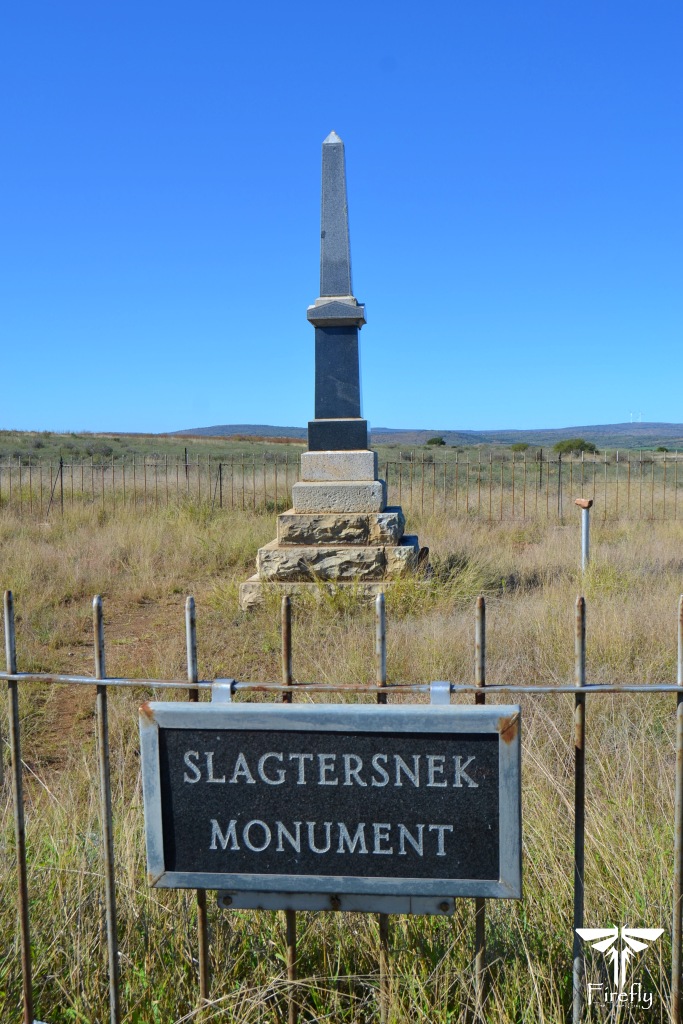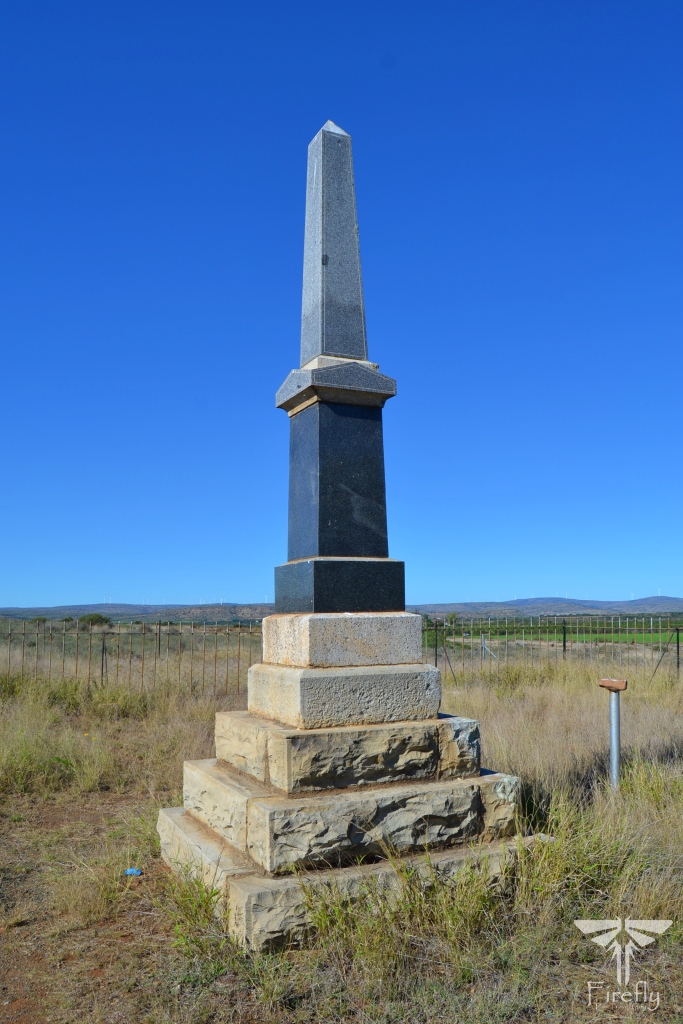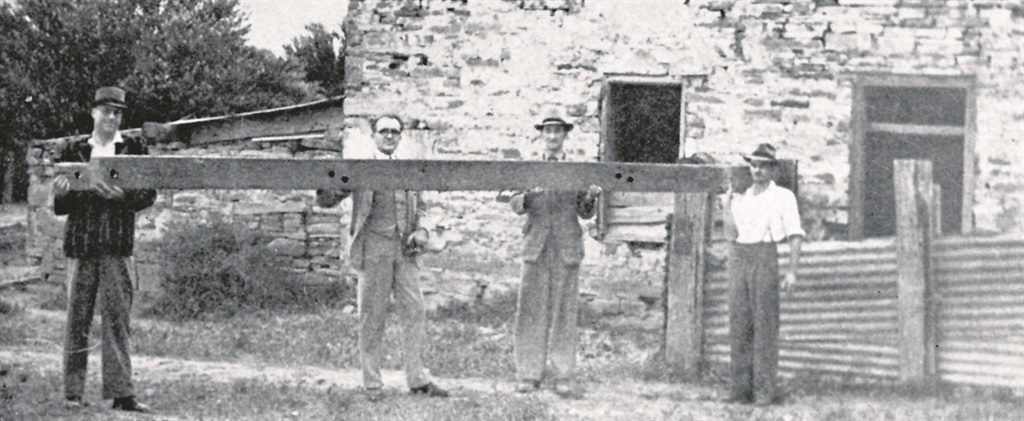
If you’re driving along the N10 south of Cookhouse in the Eastern Cape and you keep your eyes open on the eastern side of the road, you’ll spot a monument that remembers quite a significant piece of history linked to this district’s early years. A sign on the gate identifies it as the Slagtersnek (or Slachtersnek) Monument, but what is Slagtersnek, what happened here and what led to it?

Back in the early 1800s this area was the eastern border of the Cape Colony. In 1815 a farmer from the district, Frederik Bezuidenhout, was summoned to appear before a magistrate after repeated allegations of his mistreating one of his Khoi labourers. Bezuidenhout resisted arrest and fled to a cave near his home where he defended himself against the soldiers sent to capture him. In the process, he was shot dead by one of the soldiers.

As things tend to go, one thing led to another and at his funeral one of Bezuidenhout’s brothers, Johannes (Hans, also called Jan), swore revenge. Together with a neighbour Hendrik Prinsloo, Hans organised an uprising against the British colonial power. The motivation behind it being their belief that the British were hostile towards the Afrikaner farmers. On 18th November 1815, a commando of rebels met an armed force from Landdrost Jacob Cuyler, the military commander on the eastern frontier, at Slagter’s Nek. Negotiations followed but failed. In the following days, a number of rebels surrendered, although some of the leaders, among them Hans Bezuidenhout, refused to turn themselves over to the British authorities. On 29th November 1815, they were attacked by colonial troops and, like his brother, Hans died while resisting arrest.

All the arrested rebels were finally charged at Uitenhage. Some were cleared, others imprisoned or banished. Six were sentenced to death with one being pardoned by the Governor, Lord Charles Somerset. On 9 March 1816, the remaining five were hanged in public at Van Aardtspos. The hangman conducting the execution didn’t realise that five were to be hung and didn’t bring enough rope, so he used old leather riempie rope. Four of the nooses broke during the process. The four whose ropes broke, as well as the public, pleaded for their lives as prisoners would normally be set free if the rope snapped. Culyer resisted and ordered that they be hanged a second time. This time they were hung one by one while their wives and children, who were forced to attend the hanging, had to watch. The names of the five who were hanged were Hendrik Prinsloo, Stephanus Bothma, Abraham Bothma, Cornelius Faber and Theunis de Klerk and their names appear along with those of the Bezuidenhout brothers on the monument erected 100 years after the execution.

After the hangings the beam was returned to its original purpose which was as ceiling support in a farm’s pigsty. It was eventually removed and became an icon of Afrikaner nationalism. In 1949, it was transported to the opening of the completed Voortrekker Monument outside Pretoria and then it ended up in the Cape Town Historical Museum.

It was here that Emile Badenhorst, then curator of the Somerset East Museum, discovered the beam in one of the storage rooms. It took 5 years of phoning and organising to return the beam to Somerset East where it now forms part of the Slagtersnek Rebellion exhibit in the Somerset East Museum. The beam still bears the bolt holes which secured it to a wooden structure and turned it into a gallows.



